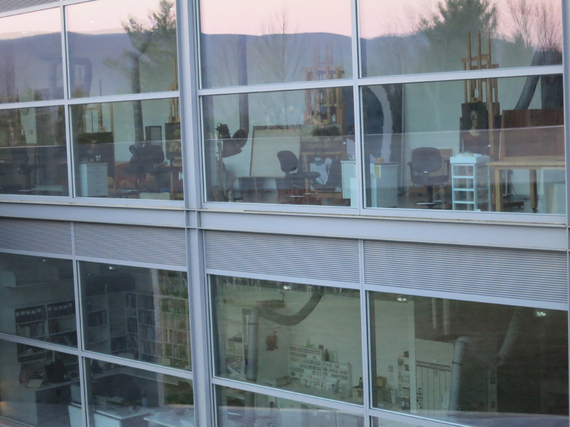I was invited last week to speak at the Williamstown Art Conservation Center and to discuss five Winslow Homer watercolors they are currently restoring. It was a treat for me to be able to look at the paintings unframed and to share the presentation with the Paper Conservator Leslie Paisley. I was invited by The National Gallery of Art to give a talk on Winslow Homer's Watercolors during the Homer exhibit at the National Gallery with the exhibition curator Franklin Kelly and conservator Judy Walsh. What I like about these presentations is that it affords a wonderful dialogue of different perspectives -- each bringing their expertise trying to figure out how the painting was made.
Leslie had some great information about Homer's painting techniques and his paints and I brought my own watercolors, sketchbook and what I take to paint on site for comparison. In many ways not much has changed. The conservator can talk about the nuts and bolts while I try and figure out what was going on in the artist's head and eye. In this case, what did Homer see, how did he chose to paint it, why that and how did he execute it. I can tell how long it probably took the artist to paint because I paint the painting in my head, I can tell if it is a really quick sketch or belabored, painted outdoors or a studio painting, if it is a good painting or really not so great. This comes from over forty years of painting (I was fortunate to have a mother who was also an artist and head of the Design Department at Pratt Art Institute in NYC) as well as art historical studies at Williams College and Harvard University, and years of looking. The scholars/curators/conservators help put the painting in context and the artist brings different pieces of the puzzle together to make a whole.
I am familiar with the Williamstown Art Conservation Center from my undergraduate years at Williams College and graduate course at the Sterling and Francine Clark Art Institute which houses the Conservation Center. In fact, years ago I made an appointment to speak with the conservator to ask about the proper way to frame my works for conservation purposes. Framing a work of art with archival material is very important .
The Williamstown Art Conservation Center has had a longstanding reputation as one of the top conservation labs in the country. The nonprofit facility is devoted to the conservation and preservation of cultural and historical objects. The Center treats a full range of artworks and artifacts, including paintings, works on paper, photographs, sculpture, art objects, textiles, furniture, fine frames, antiques, heirlooms, and personal treasures. It serves museums, libraries, educational institutions, historical societies, and archives, as well as corporations, independent art professionals, and private collectors. WACC offers state-of-the-art scientific analysis, and serves institutions as a consultant and partner on all aspects of collections care. Recently I walked by a very large deKooning it was restoring which I later saw in a major museum exhibit.
Their new space allows a great view of the lab from the outside through the exterior wall of glass windows, and gives you a glimpse into the workings of a conservation lab without having to have an appointment. Conservation labs are often a bit under the radar but guardians of the arts of our cultures, as well as treasure troves of great works of art. I am happy to report our presentation was oversubscribed.

